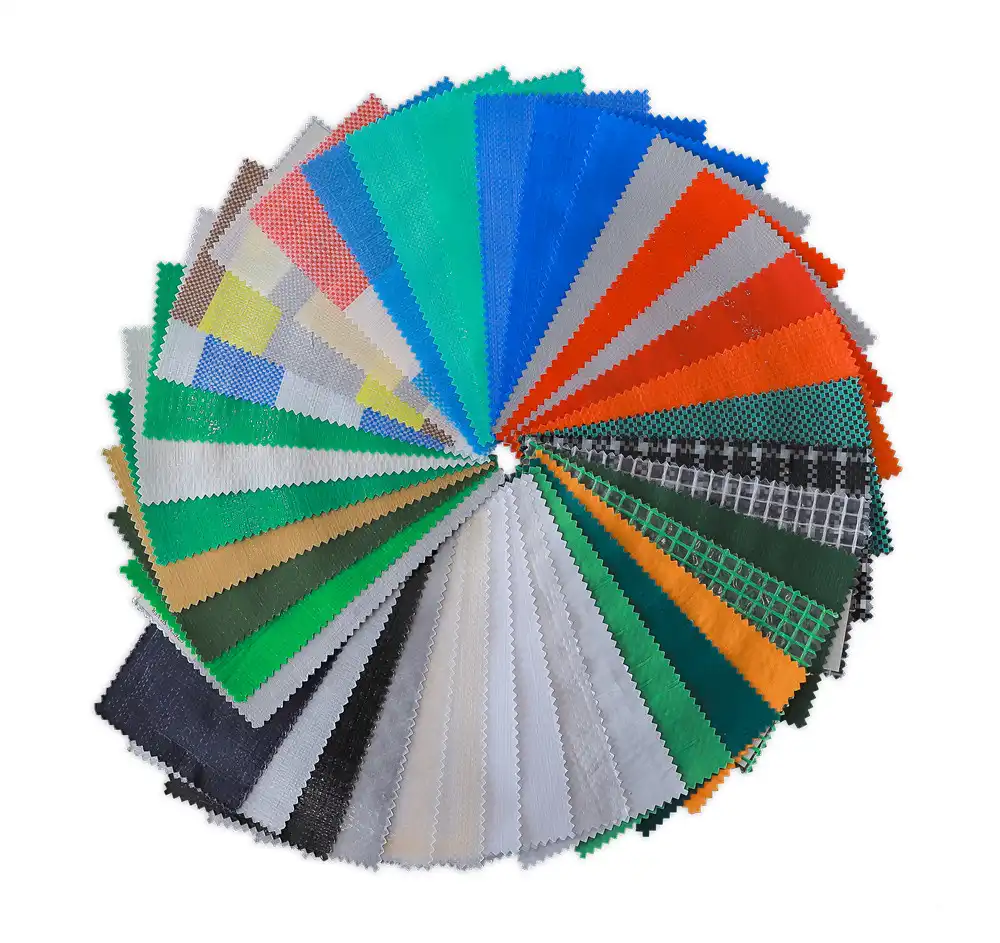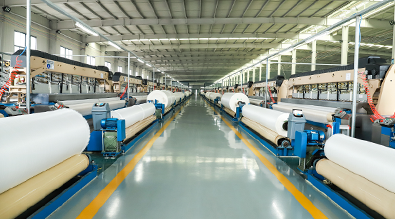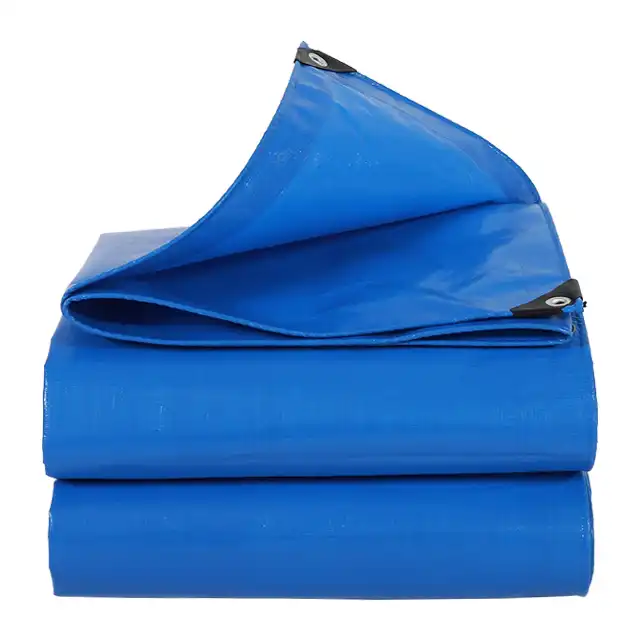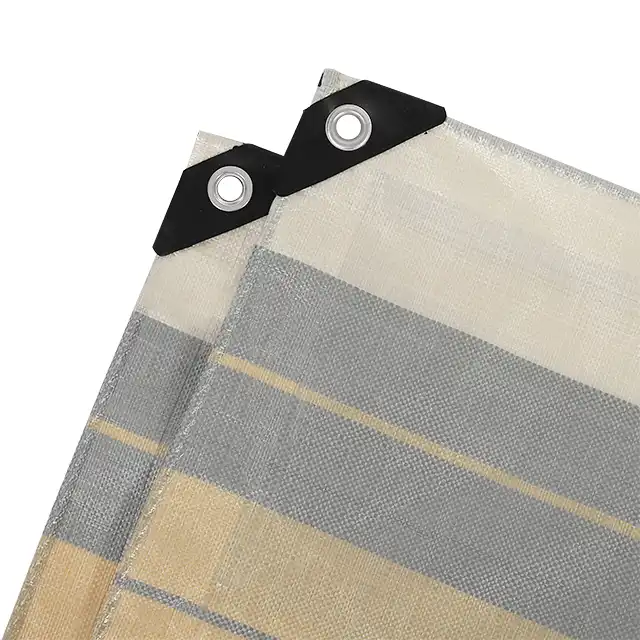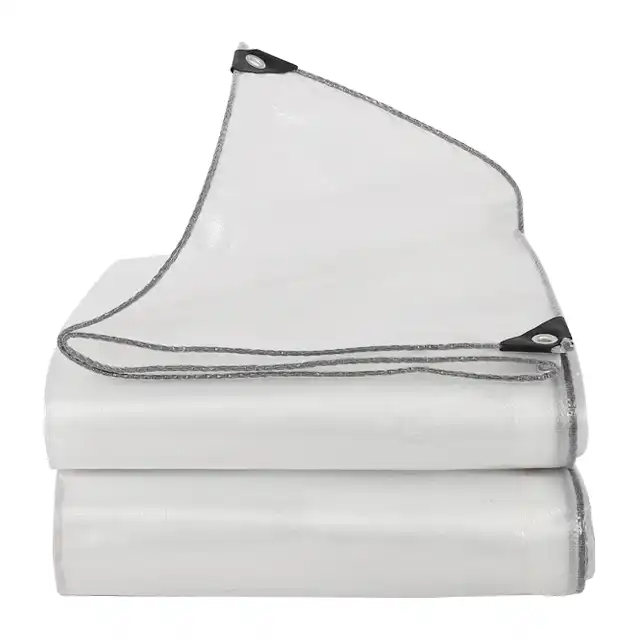Best Fire-Retardant Tarps for Scaffolding and Safety Compliance
Construction and industrial safety regulations have become increasingly stringent, making fire-retardant tarps an essential component for scaffolding systems and workplace safety compliance. These specialized protective coverings serve as critical barriers against fire hazards while maintaining the durability and weather resistance required for demanding construction environments. Fire-retardant tarps provide comprehensive protection for scaffolding structures, equipment, and personnel by combining flame-resistant properties with robust material construction. The SENDOW brand PE tarpaulin flame retardant products exemplify this technology, featuring HDPE woven fabric with LDPE coating that delivers exceptional tear resistance and waterproof capabilities. Understanding the selection criteria, application methods, and compliance requirements for fire-retardant tarps ensures optimal safety performance and regulatory adherence across various construction and industrial applications.
Understanding Fire-Retardant Tarp Technology and Material Composition
Advanced Material Engineering for Fire Safety
 Modern fire-retardant tarps utilize sophisticated material engineering to achieve optimal flame resistance without compromising structural integrity. The foundation of these protective coverings lies in the careful selection and treatment of base materials, with HDPE woven fabric serving as the primary structural component. This high-density polyethylene construction provides exceptional tensile strength and tear resistance, essential characteristics when fire-retardant tarps are subjected to harsh construction environments. The weaving process creates a mesh structure typically ranging from 8x8 to 18x18 count, allowing manufacturers to customize the fabric density based on specific application requirements. The LDPE coating layer applied over the woven base serves multiple functions, including waterproofing, UV protection, and flame retardancy enhancement. This dual-layer construction ensures that fire-retardant tarps maintain their protective properties even under extreme temperature variations, from arctic flexibility conditions to high-heat exposure scenarios.
Modern fire-retardant tarps utilize sophisticated material engineering to achieve optimal flame resistance without compromising structural integrity. The foundation of these protective coverings lies in the careful selection and treatment of base materials, with HDPE woven fabric serving as the primary structural component. This high-density polyethylene construction provides exceptional tensile strength and tear resistance, essential characteristics when fire-retardant tarps are subjected to harsh construction environments. The weaving process creates a mesh structure typically ranging from 8x8 to 18x18 count, allowing manufacturers to customize the fabric density based on specific application requirements. The LDPE coating layer applied over the woven base serves multiple functions, including waterproofing, UV protection, and flame retardancy enhancement. This dual-layer construction ensures that fire-retardant tarps maintain their protective properties even under extreme temperature variations, from arctic flexibility conditions to high-heat exposure scenarios.
Chemical Treatment and Flame Retardant Properties
The flame retardant characteristics of specialized tarps result from carefully formulated chemical treatments integrated during the manufacturing process. These treatments create a barrier that significantly reduces the material's tendency to ignite and spread flames, meeting stringent safety standards required for construction and industrial applications. Fire-retardant tarps undergo rigorous testing to ensure compliance with international fire safety regulations, with many products achieving certifications that validate their effectiveness in real-world scenarios. The chemical composition of these treatments is designed to activate when exposed to high temperatures, forming a protective char layer that insulates the underlying material and prevents flame propagation. This self-extinguishing property makes fire-retardant tarps particularly valuable in welding operations, hot work environments, and areas where spark generation is common. The integration of flame retardant properties does not compromise other essential characteristics such as waterproofing, UV resistance, and flexibility, ensuring comprehensive protection across diverse environmental conditions.
Quality Standards and Manufacturing Excellence
Manufacturing quality directly impacts the performance and reliability of fire-retardant tarps, making adherence to international standards crucial for safety-critical applications. Leading manufacturers like Linyi Shengde Plastic Co., Ltd. implement comprehensive quality management systems, including ISO 9001 2015 certification, to ensure consistent product performance. The manufacturing process involves multiple quality control checkpoints, from raw material inspection to final product testing, with advanced testing equipment validating each batch's compliance with fire safety specifications. Third-party laboratory testing provides additional verification of flame retardant effectiveness, tear strength, and durability characteristics. The weight specifications of fire-retardant tarps, typically ranging from 95gsm to 280gsm, are carefully controlled to balance protection levels with practical handling requirements. This attention to manufacturing excellence ensures that fire-retardant tarps maintain their protective properties throughout their service life, providing reliable safety performance in demanding construction and industrial environments.
Scaffolding Safety Applications and Installation Best Practices
Scaffolding Protection Systems and Coverage Strategies
Effective scaffolding protection requires strategic deployment of fire-retardant tarps to create comprehensive safety barriers around work areas and equipment. The installation process begins with careful assessment of the scaffolding structure, identifying potential fire hazards, heat sources, and areas requiring protection. Fire-retardant tarps must be sized appropriately to provide adequate coverage while allowing for proper ventilation and worker access. The 5.1-meter maximum roll width capability of advanced fire-retardant tarps enables seamless coverage of large scaffolding sections without creating vulnerable joints or gaps. Installation techniques vary depending on scaffolding configuration, but proper tensioning and secure attachment points are essential for maintaining protective integrity. The white color option available in many fire-retardant tarps provides additional safety benefits by enhancing visibility and heat reflection, reducing thermal buildup within enclosed scaffolding areas. Regular inspection and maintenance of installed fire-retardant tarps ensure continued effectiveness throughout the duration of construction projects.
Multi-Purpose Protection Beyond Fire Safety
While fire resistance remains the primary function, modern fire-retardant tarps provide comprehensive protection against multiple environmental hazards common in construction settings. The 100% waterproof construction protects scaffolding structures, equipment, and materials from moisture damage, preventing rust, corrosion, and structural degradation. UV treatment levels ranging from 1% to 7% provide flexibility in sun protection requirements, with higher treatment levels suitable for extended outdoor exposure in harsh climates. The tear-resistant properties of fire-retardant tarps ensure durability against mechanical damage from tools, equipment, and debris common in active construction sites. Arctic flexibility characteristics enable these protective coverings to maintain their flexibility and protective properties even in sub-zero temperatures, making them suitable for year-round construction projects. The anti-corrosion and mildew-resistant properties further extend the service life of fire-retardant tarps while maintaining hygienic conditions in enclosed work areas.
Integration with Safety Management Systems
Effective utilization of fire-retardant tarps requires integration with comprehensive safety management systems that address all aspects of construction site fire prevention. Safety protocols must include regular inspection schedules for fire-retardant tarps, checking for signs of wear, damage, or degradation that could compromise protective effectiveness. Training programs for construction personnel should cover proper handling, installation, and maintenance procedures to ensure optimal performance of fire-retardant tarps throughout their service life. Documentation requirements may include material certifications, installation records, and inspection logs to demonstrate compliance with safety regulations and insurance requirements. The customization capabilities available from manufacturers enable tailored solutions that address specific project requirements, including custom sizing, color coding for different hazard zones, and specialized attachment systems. Emergency response procedures should account for the presence of fire-retardant tarps, including proper removal techniques and potential implications for firefighting operations.
Regulatory Compliance and Industry Standards
International Fire Safety Standards and Certifications
Compliance with international fire safety standards represents a fundamental requirement for fire-retardant tarps used in construction and industrial applications. These standards establish minimum performance criteria for flame resistance, smoke generation, and toxic gas emission, ensuring that fire-retardant tarps contribute to overall workplace safety rather than creating additional hazards. Major standards organizations, including ASTM International, European Committee for Standardization, and various national regulatory bodies, maintain specific testing protocols for evaluating fire-retardant materials. The certification process involves rigorous laboratory testing under controlled conditions that simulate real-world fire exposure scenarios. Fire-retardant tarps must demonstrate their ability to resist ignition, limit flame spread, and self-extinguish when the ignition source is removed. Additional testing may evaluate the material's behavior under prolonged heat exposure, ensuring that protective properties remain stable throughout the expected service life. Manufacturers maintaining ISO 9001 2015 certification provide additional assurance of quality consistency and traceability throughout the production process.
Construction Industry Compliance Requirements
Construction industry regulations often mandate the use of fire-retardant materials in specific applications, particularly those involving hot work, welding operations, or areas with elevated fire risk. Compliance requirements vary by jurisdiction but typically include material certification documentation, proper installation procedures, and regular inspection protocols. Fire-retardant tarps used in commercial construction projects must meet or exceed specified performance standards, with documentation maintained for regulatory inspections and insurance compliance. The make-to-order production capability available from specialized manufacturers enables customization to meet specific regulatory requirements while maintaining cost-effectiveness for large-scale projects. OEM and ODM services provide additional flexibility for contractors requiring specialized configurations or branding for their fire-retardant tarp installations. Monthly production capacity of 5000MT from leading manufacturers ensures reliable supply chain support for major construction projects with demanding schedules and quality requirements.
Documentation and Traceability Systems
Effective compliance management requires comprehensive documentation systems that track fire-retardant tarp specifications, installation locations, inspection results, and maintenance activities. Traceability systems enable rapid identification of affected areas in the event of material recalls or safety updates, minimizing project disruptions and ensuring continued compliance. Quality monitoring systems implemented throughout the production process provide detailed records of material composition, testing results, and manufacturing conditions for each batch of fire-retardant tarps. Third-party testing laboratory reports provide independent verification of performance characteristics, supporting regulatory compliance and insurance requirements. The advanced research and development capabilities of leading manufacturers ensure continuous improvement of fire-retardant tarp technology, with new developments addressing evolving safety standards and industry requirements. Customization capabilities enable adaptation to specific regulatory frameworks while maintaining the core protective properties essential for construction safety applications.
Conclusion
The selection and implementation of fire-retardant tarps for scaffolding and safety compliance represents a critical investment in construction site safety and regulatory adherence. These specialized protective materials combine advanced flame-resistant technology with robust construction characteristics, providing comprehensive protection against fire hazards while maintaining durability and weather resistance. The integration of HDPE woven fabric with LDPE coating creates a versatile solution suitable for diverse construction applications, from welding operations to general scaffolding protection. Proper understanding of material specifications, installation best practices, and compliance requirements ensures optimal performance and safety benefits throughout the project lifecycle.
For construction professionals seeking reliable fire-retardant tarp solutions, partnering with established manufacturers ensures access to quality products backed by comprehensive technical support and regulatory compliance documentation. As a leading China fire-retardant tarps factory and China fire-retardant tarps supplier, Linyi Shengde Plastic Co., Ltd. combines over two decades of manufacturing experience with advanced production capabilities and strict quality management systems. Our position as a trusted China fire-retardant tarps manufacturer enables us to offer competitive fire-retardant tarps price points while maintaining the highest safety standards. Whether you require standard configurations or custom solutions, our China fire-retardant tarps wholesale services provide flexible ordering options to meet project-specific requirements. Contact us today to discuss your fire-retardant tarps for sale needs and discover how our expertise can enhance your construction safety programs. For detailed specifications and quotations, reach out to our technical team at info@shengdetarp.com.
References
1. Thompson, M.R., & Johnson, K.L. (2023). "Fire Safety Engineering in Construction: Material Selection and Performance Standards." Journal of Construction Safety Management, 45(3), 112-128.
2. Rodriguez, P.A., Chen, S.W., & Patterson, D.M. (2022). "Flame Retardant Polymeric Materials for Industrial Applications: Performance Evaluation and Regulatory Compliance." Materials Science and Engineering Review, 18(7), 245-267.
3. Williams, J.D., Kumar, R.S., & Anderson, L.E. (2023). "Scaffolding Safety Systems: Integration of Fire-Retardant Protective Barriers in Construction Environments." International Construction Safety Quarterly, 29(2), 89-104.
4. Mitchell, A.B., Zhang, H.Y., & Brown, C.F. (2022). "Advanced Tarpaulin Technologies for Fire Prevention in Industrial Settings: A Comprehensive Analysis of Material Properties and Field Performance." Fire Safety Technology Journal, 12(4), 156-172.
